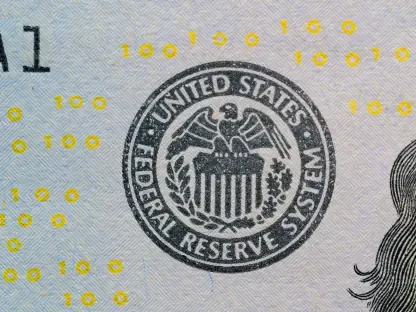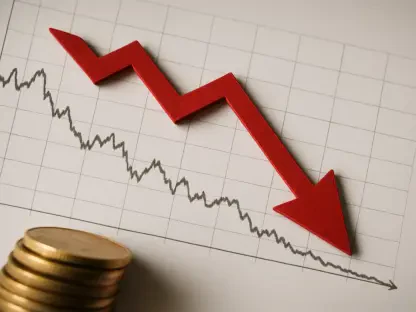As financial markets open, investors are continually adapting to rapid changes in economic policies and technological advancements. Focusing on recent performance, U.S. stock futures have experienced a noticeable decline, marking four consecutive weeks of losses. The Dow Jones, Nasdaq, and S&P 500 indexes all saw significant drops, driven largely by investor caution ahead of the Federal Reserve’s upcoming interest rate decision. Specifically, the Dow Jones futures fell by 0.3%, which adds to last week’s decrease of 3.1%. Similarly, Nasdaq and S&P 500 futures edged lower, after shedding 2.4% and 2.3%, respectively. These developments indicate a prevalent sense of apprehension among investors regarding future economic stability.
Investor Caution Amid Federal Reserve’s Interest Rate Decision
The Federal Reserve’s looming decision on interest rates remains a critical factor influencing investor behavior. Given the economic turbulence of recent years, investors are wary of potential rate hikes, which the Fed might employ to curb inflation. Such hikes could have significant repercussions on borrowing costs and spending, ultimately impacting market liquidity. Historical patterns reveal that rate hikes often stifle economic growth as businesses face higher borrowing costs, leading to reduced investments and hiring.
Concurrently, inflation has shown no clear signs of abating, compelling the Federal Reserve to maintain a hawkish stance. This strategy aims to regulate price increases but runs the risk of ushering in an economic slowdown. Investors, caught between these economic variables, remain vigilant, with many adopting more conservative strategies to mitigate potential risks. This cautious approach is reflected in the persistent decline of U.S. stock futures, suggesting a collective hesitation to make bold financial moves amid uncertainty.
Technological Advancements and Market Reactions
Alongside the Federal Reserve’s decisions, technological advancements continue to play a pivotal role in shaping market dynamics. Anticipation is particularly high surrounding the upcoming Nvidia GTC conference, where the tech giant is expected to unveil groundbreaking developments in artificial intelligence (AI) chips and other technologies. Nvidia’s stock has already shown a 1.5% increase in premarket trading, indicating strong investor confidence in the company’s innovative potential. The market’s keen interest in AI and related technologies underscores the sector’s significant influence on broader economic trends.
Additionally, the performance of gold futures, which have now surpassed $3,000 an ounce, indicates the metal’s enduring appeal as a safe-haven asset. As economic uncertainties persist, many investors turn to gold to hedge against market volatility and inflation. This surge in gold prices signals an underlying tension within financial markets, where traditional assets are increasingly favored amid unpredictable economic policies and potential inflationary pressures.
Key Developments Impacting Investor Strategies
Further influencing the financial landscape, Klarna has recently filed for a U.S. IPO, despite the prevalent market volatility. Targeting a valuation above $15 billion, the BNPL (buy-now-pay-later) firm’s ambitious move highlights the continued interest and investment in fintech innovations. This sector’s resilience is evident, as companies like Klarna navigate challenging economic conditions to pursue growth opportunities.
Another significant announcement comes from Baidu, which has unveiled new AI models, ERNIE 4.5 and ERNIE X1. These models promise enhanced performance at competitive costs, positioning Baidu favorably against its competitors. The announcement has led to a rise in Baidu’s U.S.-listed shares, reflecting investor optimism regarding the company’s advancements. Such technological progress is instrumental in shaping market sentiments and influencing investment decisions.
Looking Forward – Navigating Economic and Technological Landscapes
As financial markets open, investors constantly adjust to swift changes in economic policies and technological progress. Recently, U.S. stock futures have shown a noticeable decline, marking four consecutive weeks of losses. Key indexes such as the Dow Jones, Nasdaq, and S&P 500 have experienced significant drops, primarily driven by investor caution before the Federal Reserve’s upcoming decision on interest rates. In detail, Dow Jones futures fell by 0.3%, adding to last week’s 3.1% decrease. Similarly, Nasdaq and S&P 500 futures also edged lower, after previously shedding 2.4% and 2.3%, respectively. This situation highlights the prevalent sense of unease among investors regarding future economic stability. The ongoing uncertainty in the markets reflects broader anxieties about potential shifts in economic direction and the impact of technological advancements. Investors remain watchful and cautious, awaiting the Fed’s next move.









